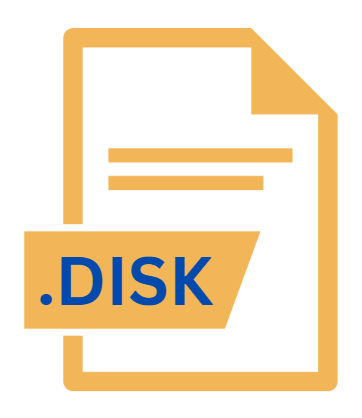.DISK File Extension

Linux Virtual Hard Disk
| Developer | Update Soon |
| Popularity | |
| Category | Disk Image Files |
| Format | .DISK |
| Cross Platform | Update Soon |
What is an DISK file?
The .DISK file extension is commonly used in Linux environments to represent virtual hard disk files.
These files are essential in virtualized computing, where they emulate a physical hard drive within a virtual machine (VM).
A .DISK file contains all the data, file systems, and partitions of a virtual machine, making it a self-contained environment that can be easily managed, backed up, and moved across different platforms.
More Information.
The concept of virtual hard disks dates back to the development of the first virtual machines. However, the .DISK file format gained prominence with the rise of open-source virtualization platforms.
Early virtualization solutions relied on proprietary formats, but as Linux-based systems grew in popularity, there was a need for a more open and flexible format that could be used across different platforms.
The .DISK file format was designed to be versatile, supporting various disk image formats, including raw, qcow2 (QEMU Copy-On-Write), and vmdk (VMware Virtual Machine Disk).
This flexibility made .DISK files a preferred choice for Linux users, as they could be easily integrated into different virtualization environments without compatibility issues.
Origin Of This File.
The .DISK file format emerged as part of the broader development of virtualization technologies. Virtualization allows a single physical machine to run multiple virtual machines, each acting as an independent computer.
This technology has its roots in the early days of mainframe computing but gained significant traction with the advent of more powerful x86 processors and the rise of cloud computing.
The .DISK file format was developed to standardize the way virtual hard disks are stored and managed in Linux-based virtualization platforms.
It is particularly prevalent in open-source virtualization solutions such as QEMU (Quick Emulator), KVM (Kernel-based Virtual Machine), and VirtualBox.
File Structure Technical Specification.
The structure of a .DISK file is designed to replicate the layout of a physical disk drive, including partitions, file systems, and data. A .DISK file typically contains several components:
- Header Information: This section includes metadata about the disk image, such as its size, format version, and partition layout.
- Partition Table: The partition table defines the structure of the disk, indicating where each partition begins and ends, as well as the type of file system used in each partition.
- File System Data: This section contains the actual data stored on the disk, organized according to the file system in use (e.g., NTFS, FAT32, ext4).
- Optional Compression: Some .DISK files may use compression to reduce their size, making them easier to store and transfer. Compression methods can vary, with common algorithms including ZIP and LZMA.
- Checksum/Integrity Information: To ensure data integrity, .DISK files may include checksum information, allowing the software to verify that the file has not been corrupted or altered.
The technical specifications of a .DISK file can vary depending on the software used to create it. For example, VMware might have a different structure compared to a .DISK file created by Oracle VirtualBox. Despite these differences, the core purpose remains the same: to provide a complete, portable representation of a disk drive.
How to Convert the File?
Converting .DISK files to other formats may be necessary if you’re switching virtualization platforms or need compatibility with different software. Several tools can assist with this process:
- VMware Converter: This tool allows users to convert .DISK files to other VMware-supported formats, such as .VMDK.
- qemu-img: An open-source tool that supports converting .DISK files to formats like .QCOW2 or .RAW.
- VirtualBox: Oracle’s VirtualBox can convert .DISK files to its native .VDI format using the command line or GUI.
When converting a .DISK file, it’s essential to ensure that the target format supports all the features required by your application, such as snapshots or specific file system types.
Advantages And Disadvantages.
Advantages:
- Portability: .DISK files are highly portable, allowing virtual machines to be easily moved between different hosts or even different virtualization platforms.
- Flexibility: The ability to choose between different formats (e.g., raw, qcow2, vmdk) provides users with the flexibility to optimize for performance, storage efficiency, or compatibility.
- Snapshots: Formats like qcow2 support snapshots, enabling users to take point-in-time captures of their virtual machines, which is invaluable for backup and testing purposes.
- Integration: Seamlessly integrates with popular Linux-based virtualization platforms, making it a preferred choice for open-source enthusiasts.
Disadvantages:
- Complexity: The flexibility of .DISK files can also be a drawback, as managing different formats and features (e.g., snapshots, compression) requires a certain level of expertise.
- Size: Raw .DISK files can be large, consuming significant storage space, especially if not using a format that supports compression.
- Performance Overhead: Advanced features like snapshots and compression in formats like qcow2 can introduce performance overhead, potentially impacting the virtual machine’s speed.
How to Open DISK?
Open In Windows
- VirtualBox: Open .DISK files in VirtualBox as you would in Linux.
- VMware: Convert the .DISK file to a compatible format like vmdk using tools like
qemu-imgorVBoxManage, then open it in VMware Workstation or Player. - Disk Management: Windows’ native Disk Management tool doesn’t support .DISK files natively; conversion to a supported format is required.
Open In Linux
- VirtualBox: Open .DISK files directly using the VirtualBox Manager or via the command line using
VBoxManage. - QEMU/KVM: Use
qemu-system-x86_64 -hda yourfile.diskto boot a virtual machine from the .DISK file. - Mounting: Mount the .DISK file as a loopback device using the command
sudo mount -o loop yourfile.disk /mntto access its contents.
Open In MAC
- Parallels Desktop: Convert the .DISK file to a compatible format such as vmdk or hdd for use in Parallels Desktop.
- VirtualBox/QEMU: Similar to Linux, VirtualBox and QEMU can open .DISK files directly or with minimal conversion.













